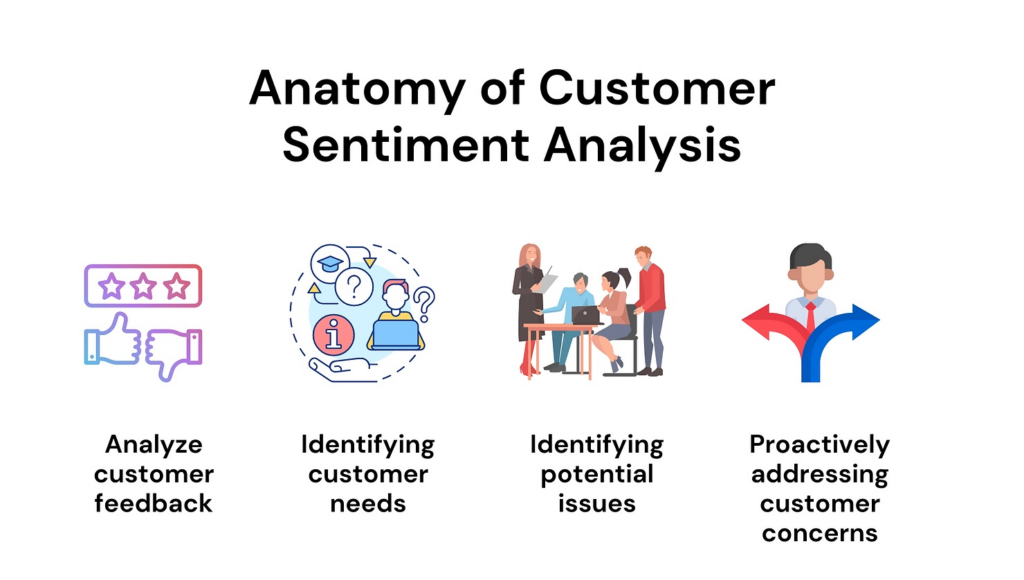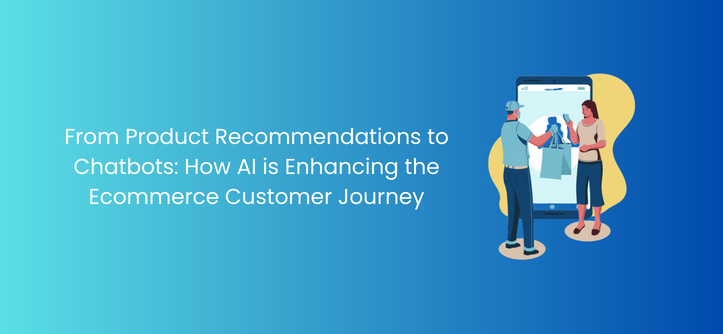Artificial Intelligence (AI) has been transforming much of the human experience – from the world of work to our shopping habits.
You may be shocked to hear that the market size of AI stands at $207 billion today and is projected to grow to $1.85 trillion by 2030, according to the latest projections. That difference represents a significant opportunity for your eCommerce business to get ahead of the trend, out-compete your rivals, and, ultimately, increase your bottom line.
One popular example of AI is the use of chatbots in eCommerce. Chatbots can handle routine customer service tasks, such as answering FAQs and handling customer complaints, all at a moment’s notice, freeing human customer service representatives to handle more complex inquiries, reducing customer wait times and improving overall customer satisfaction.
If you want to tap into these benefits, it’s crucial to develop a marketing strategy that includes AI, and this article will discuss some of the most exciting use cases for AI in 2023, such as personalized services, supply chain streamlining, optimum pricing structures, and more.
We’ll dive into the eCommerce customer journey, exploring how AI can offer personalized services, streamline your supply chains, calculate optimum pricing structures, and more.

Image Source: Statista.com
How to Use AI in eCommerce: 8 Use Cases
One of the most exciting aspects of AI technology is the rapid pace at which it’s developing. However, this also means staying on top of trends can be challenging.
However, by exploring some of the latest industry-changing solutions and innovative uses, you can find inspiration to enhance the eCommerce customer journey.
We’ll dive into the eCommerce customer journey by mapping it out and exploring how AI can offer personalized services, streamline your supply chains, calculate optimum pricing structures, and more.
Product Recommendations
Product recommendations are an essential part of the eCommerce customer experience, and AI has revolutionized how it’s done. By analyzing customer behaviour and preferences, AI algorithms can provide highly personalized recommendations that improve the overall customer experience.
Here’s how it works:
- Collaborative filtering: This technique looks at the purchasing history of customers with similar preferences and recommends products they have also bought. You might have seen this before in the form of a ‘Customers also bought’ section at the checkout.
- Content-based filtering: This method looks at the characteristics of products that a customer has already purchased. For instance, if your product requires AA batteries, then the algorithm would likely suggest these batteries to you as well.
- Natural language processing: AI can also analyze product descriptions and user reviews, adding another layer of personalization to a customer’s unique preferences.
Together, these methods allow for highly accurate recommendations based on actual data, improving the chances of a potential customer making a purchase decision.

Image source: Walmart.com
Chatbots for Customer Service
Chatbots seem to be all the rage, especially since the hotly anticipated launch of OpenAI’s ChatGPT-4 in March 2023. Of all the exciting use cases of generative text programs, one application in eCommerce is the use of customer service chatbots.
Chatbots can handle routine customer service tasks, such as answering FAQs and handling customer complaints – all at a moment’s notice. This frees human customer service representatives to handle more complex inquiries, reducing customer wait times and improving overall customer satisfaction.
What’s more, chatbots can use customer data to personalize their responses, making the customer service experience more tailored to each individual. As these programs become more sophisticated, one day, your customers may not even know whether they are speaking to a human or a robot.
Similarly, you could implement chatbots into your text messaging apps for businesses to boost productivity and reduce errors in communication.
Personalized Email Marketing
Artificial Intelligence is widely used in personalized email campaigns to help brands send targeted and relevant messages to their customers. In fact, if you’ve ever received an email from a brand, chances are AI-powered it in some form.
How exactly? Well, AI algorithms can analyze your browsing history and purchase behavior to compose content that resonates with you personally. For example, once the AI figures out you’re a new parent, you’d likely receive unique and relevant special offers, such as discounts on baby clothes or strollers.

Image source: ethique.com email
Moreover, AI can guide you on email campaign timings, ensuring messages are sent at the optimal time for maximum impact, such as the hours when an individual customer has previously browsed your online store.
By sending personalized emails relevant to a customer’s interests and needs, brands can boost their open rates, click-through rates, and, ultimately, increase sales.
If you’re looking for another way to improve your website’s user experience, consider embedding your Instagram feed on your website. This can give your customers a glimpse into your brand’s personality, and keep them engaged with your content even when they’re not actively shopping.
Image Recognition for Product Search
AI image recognition introduces a new feature for shoppers: product search.
There are a couple of ways this can work:
- A shopper can take a picture of an item in one of your physical stores, and the AI will find that product’s online page.
- A shopper can take a picture of anything in their home, and the AI can suggest similar items based on its appearance.
Another benefit of AI-powered image recognition in eCommerce is that it can reduce the number of manual tasks for online retailers. For example, instead of manually tagging each product with specific keywords, image recognition technology can automatically tag products based on the features it detects in the image.
On the whole, image recognition solutions save time for shoppers and retailers, and it’s something you’ll undoubtedly want to consider adding. That said, you’ll need a fast and reliable, decoupled architecture service to adequately support these features.

Image source: indatalabs.com
Predictive Analytics for Inventory Management
“Predictive analytics” is essentially a fancy term for using data to make predictions about the future. In eCommerce, this can be incredibly useful for inventory management.
Implementing an AI tool for predictive analytics can help you stay on top of inventory management, ensuring that you never run out of stock or hold too much inventory.
For example, AI algorithms often analyze data such as past sales patterns, seasonal trends, and even weather forecasts to predict future demand for specific products. By doing so, businesses can adjust their inventory levels accordingly to avoid stockouts or overstocking, which can be costly.
AI can also help identify slow-moving or low-margin products, allowing businesses to make informed decisions about which items to discount or remove from their inventory altogether. Additionally, predictive analytics can help optimize warehouse operations by forecasting which products will sell faster and should be placed in more accessible locations.
Together, data-driven decisions about inventory management will improve your efficiency and save on your operating costs.
Fraud Detection and Prevention
Fraud is a significant concern for e-commerce businesses, but AI can help detect and prevent it.
Here are some common things that AI looks out for:
- Unusual purchasing behavior, such as a number of high-value orders placed in a short period of time, especially if from new or previously inactive accounts.
- Suspicious IP addresses or locations, such as purchases made from countries that your service doesn’t deliver to.
- Abnormal payment methods, such as purchases made with multiple credit cards or a card reported as stolen.
- Unexplainable shipping details, such as orders to a shipping address that is different from the billing address or to a freight forwarding company.
- An unusually high number of failed login attempts or password reset requests.
By taking a comprehensive and unbiased view of website security, AI can help protect both the customer and retailer. This increases customers’ trust in your site and allows your team to focus on more important business aspects.
Price Optimization
Price optimization involves setting the right price for each product to maximize profit while remaining competitive.
With AI, businesses can analyze customer behaviour, market trends, and competitors’ prices to make more informed pricing decisions. For example, a retailer may lower prices for slow-selling items to clear inventory or even raise the price of umbrellas on a rainy day!

Image source tryolabs.com
Another way AI calculates price optimization is through geo-targeting, which allows you to offer different prices based on a customer’s location. This is essential if you want to scale your business beyond borders and compete for market share in multiple regions.
However, if you do this, ensure the shipping address matches the IP address of each customer so people don’t use VPNs to abuse the feature. You’ll also want to adopt the correct infrastructure for global online services, such as CICD DevOps.
Of course, price optimization algorithms can also feed into your marketing strategy. For instance, you may want to offer a customer who frequently buys premium products a discount on their next purchase, thereby increasing customer loyalty.
Customer Sentiment Analysis
AI can analyze customers’ opinions through a technique called “sentiment analysis”. This involves scouring product reviews, social media posts, and customer service interactions to discern underlying emotions.
Often, AI customer sentiment analysis categorizes customer feedback into positive, negative, or neutral sentiments. This can help businesses quickly identify trends and areas for improvement, such as a faulty product or an underperforming customer service agent. It can even help you identify customer pain points, allowing you to develop products and services that solve these issues.

Image source: ascendo.ai
As we discussed earlier, AI is a rapidly developing technology – and some sentiment analysis algorithms can now identify customer emotions beyond positive or negative. For example, it could highlight customer frustration, excitement, or confusion, providing businesses with a deeper understanding of how their customers are feeling and why.
Overall, AI-powered customer sentiment analysis can help eCommerce businesses better understand their customers and make targeted improvements toward their offerings.
Conclusion
There’s no denying AI has brought significant improvements to the eCommerce customer journey by enhancing personalization, simplifying site navigation, and automating customer support.
These benefits alone have brought better customer satisfaction, loyalty, and sales to early adopters of the tech. That’s not to mention the improved operational efficiency and cost savings for businesses.
However, it is vital to acknowledge the limitations of over-relying on AI, including the potential for bias, lack of human touch, and reliance on data accuracy. Therefore, you should aim to use AI as a complement to human expertise and judgment, rather than as a complete replacement.
In short, to fully leverage the benefits of AI in ecommerce, businesses must take a reflexive approach, regularly evaluating and adjusting algorithms. You should also invest in reliable data infrastructure by exploring the different types of data warehouse and selecting one based on the size of your organization and tools you plan to use. Together with AI, these digital tools will secure your business’ future success.




